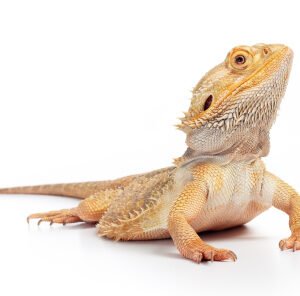bearded dragon brumation
What is Brumation in Bearded Dragons?
bearded dragon brumation ,Brumation is a physiological state that bearded dragons experience, similar in concept to hibernation but distinct in several important aspects. This term refers to a period of dormancy that many reptiles, including bearded dragons, undergo as a response to declines in environmental temperatures and changes in light availability. Unlike hibernation characterized by endothermic mammals, brumation is a cold-blooded response, meaning bearded dragons rely heavily on external temperatures to regulate their body heat and metabolic processes.
The process of brumation generally begins when temperatures fall below the optimal range for bearded dragons, typically around 70 to 85 degrees Fahrenheit. The daylight hours also shorten during this time, signaling the beginning of winter. Physiologically, bearded dragons may experience a significant drop in their metabolic rate, resulting in decreased activity levels, reduced food intake, and an overall slower pace of life. Unlike mammals, they do not sleep continuously but may enter periods of inactivity, interspersed with brief phases of waking behavior.
During brumation, a bearded dragon will go through several stages. Initially, the reptile may exhibit increased lethargy, display reduced interest in food, and seek hiding spots. Their basking behaviors will decline, as they search for cooler, dark places to rest. Common signs include a diminished appetite, lowered activity level, and, sometimes, temperature-regulating behavior changes. It is essential for pet owners to recognize these signs as a natural instinct, indicative of their bearded dragon’s response to seasonal changes. Adequate preparation for this state, including proper temperature regulation and habitat management, can help ensure the health and well-being of the reptile through this unique seasonal behavior.
Caring for Your Bearded Dragon During Brumation
Caring for your bearded dragon during the brumation period requires a comprehensive understanding of their needs and behaviors. As bearded dragons enter this dormancy phase, adjustments in their habitat are essential to ensuring their health and well-being. The first step in this process is to regulate the temperature within their enclosure. Gradually lowering the basking temperature to around 85 to 90 degrees Fahrenheit during brumation, while maintaining a cooler ambient temperature of 70 to 75 degrees, will mimic natural conditions. This change in temperatures will help trigger the brumation response in these reptiles.
Lighting is another critical component. Bearded dragons require exposure to UVB light to metabolize calcium efficiently. During brumation, it is advisable to keep the UVB light on for 6 to 8 hours each day instead of the usual 12 hours. This reduced lighting schedule aids in creating a more natural environment, which encourages their dormant state. Furthermore, bearded dragon owners must be mindful of their pets’ dietary needs during brumation. It is common for them to lose interest in food; however, it is recommended to provide small, nutritious meals every few days if they are actively feeding. Diets should be high in calcium and vitamin D3 to support their needs during this time.
Monitoring your bearded dragon for signs of health issues is also vital during brumation. Look for signs such as weight loss, lethargy, or unusual fecal output, as these could indicate underlying health problems. Owners should refrain from disturbing their pets frequently, as this may disrupt their brumation process. Instead, periodic checks can be conducted to ensure their health is stable. Lastly, preparing their environment before the onset of brumation and facilitating a gradual transition back to normal activities after this period will contribute to a smoother experience for both the bearded dragon and the owner.
Showing the single result
-
Bearded Dragons for Sale
Hypo Tricolor Bearded Dragon
Original price was: $199.00.$149.00Current price is: $149.00. Add to basket

